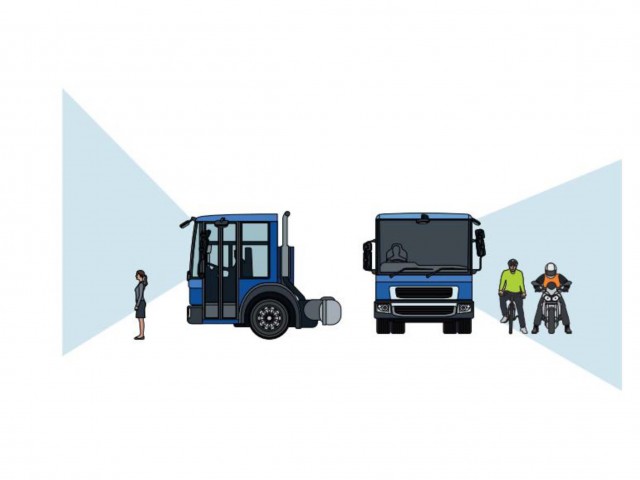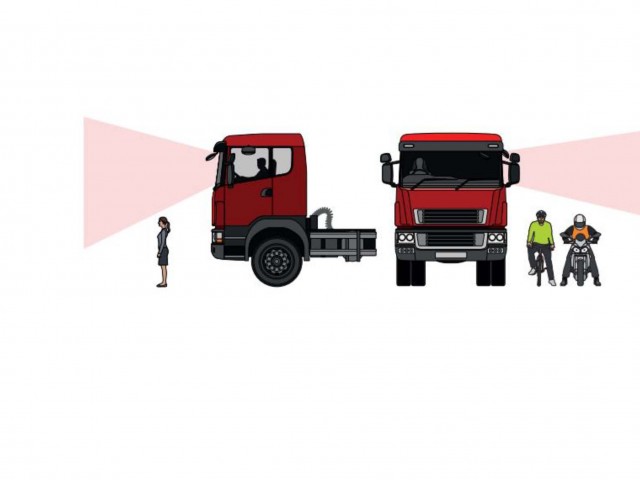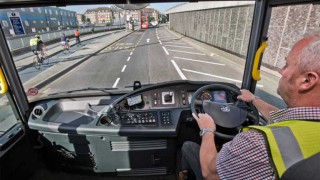What is a direct vision lorry?
Left turning lorries are the leading cause of cycling fatalities in London.
The point of impact is typically in front or on the left of the lorry. There is a vast difference between what a driver can see directly through the windows (as opposed to looking through mirrors or cameras) from different lorries. Standard cabs make it difficult for drivers to see directly cyclists to their left or close in front of them. Direct vision cabs, as in the picture, are safer because they allow drivers to see much more around them.
TfL research has shown that HGV direct vision through windows (as opposed to looking in cameras or mirrors) results in a 0.7 second quicker reaction time.

Good direct vision
A direct vision cab gives the driver has a good view of cyclists, pedestrians and motor cyclists positioned close in front, or at the side, of the cab. The driver and the cyclist can make direct eye contact.
The design of the cab enables this direct vision:
- the cab is close to the ground
- the driver is seated low in the cab close to the eye level of pedestrians and cyclists
- there is a large deep panoramic windscreen with minimal non glass vertical supports
- with the non glazed area minimised with a folding glass nearside door.

Poor direct vision
The driver in this cab cannot directly see cyclists, pedestrians and motor cyclists close in front or to the side of the cab. So they cannot make direct eye contact and can only see cyclists, pedestrians and motor cyclists close or to the side of the cab indirectly through mirrors and cameras.
This is because the cab is high off the ground, the driver is positioned high in the cab, the windscreen is less deep and the door has a smaller, high window.




